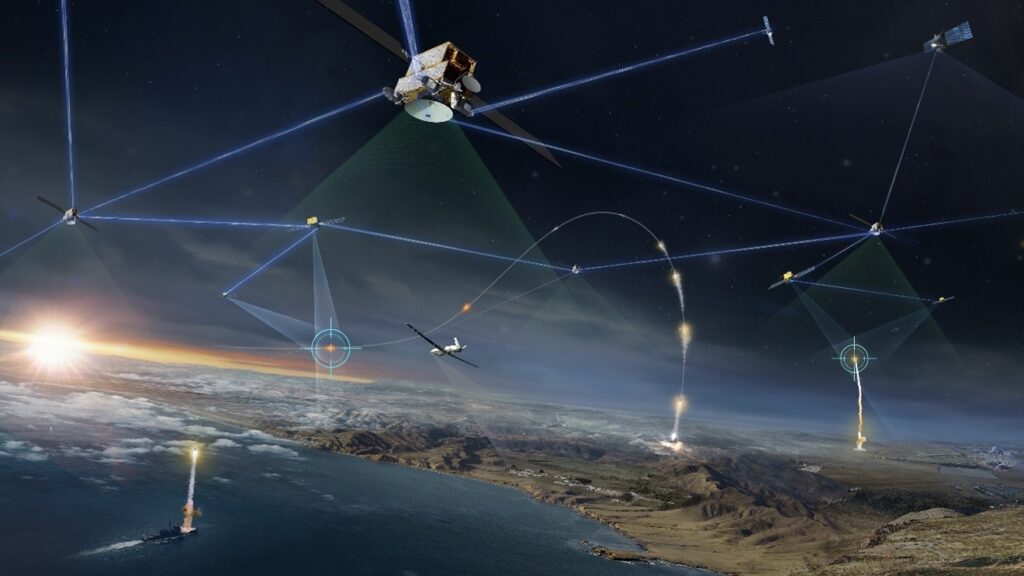Into the ‘outernet’: Secure ‘internet in space’ key to future Space Force hybrid architecture

The Space Development Agency will begin launching its Tranche 1 Transport Layer communications mesh network in 2024. (Image: Northrop Grumman)
WASHINGTON: The Pentagon has taken the first steps toward a future “hybrid space architecture” comprising military and commercial satellites in multiple orbits, moving to design a foundational cyber-protected network integration capability — i.e., a hack-proof (or close to it anyway) “internet in space,” officials say.
The hybrid space architecture concept is an outgrowth of Space Force chief Gen. Jay Raymond’s 2020 “Vision for Enterprise Satellite Communications,” first reported by Breaking Defense. And while various experimental efforts to validate the concept of a space-based internet for military users have been ongoing since then, the Defense Department and the Space Force only recently have fully embraced the concept and moved to coordinate a holistic effort to design and develop the capabilities need to substantiate it.
The Space Force’s Space Warfighting Analysis Center (SWAC), DoD’s Defense Innovation Unit (DIU), the Air Force Research Laboratory (AFRL) and the Space Development Agency (SDA) now are cooperating in this potentially revolutionary effort, officials involved told Breaking Defense, which in turn will be a key to enabling Joint All Domain Command and Control (JADC2) for future high-speed, information-centric warfare across the air, land, sea, space and cyber domains. The concept would see concentric circles of satellite communications (SATCOM) networks — highly encrypted military constellations, slightly less secure SATCOM provided by allies, and unclassified commercial constellations.
Recently SWAC has made progress in developing the overarching space data transport “force design” for the concept. Meanwhile, DIU’s project with AFRL, which is designing the glue that will patch the disparate SATCOM networks together, just last week announced concrete steps as well, officials involved said.
And while SDA has already begun to launch a constellation of small satellites in Low Earth Orbit, called the Transport Layer, to allow high speed, low latency, internet-capable data communications, those…

